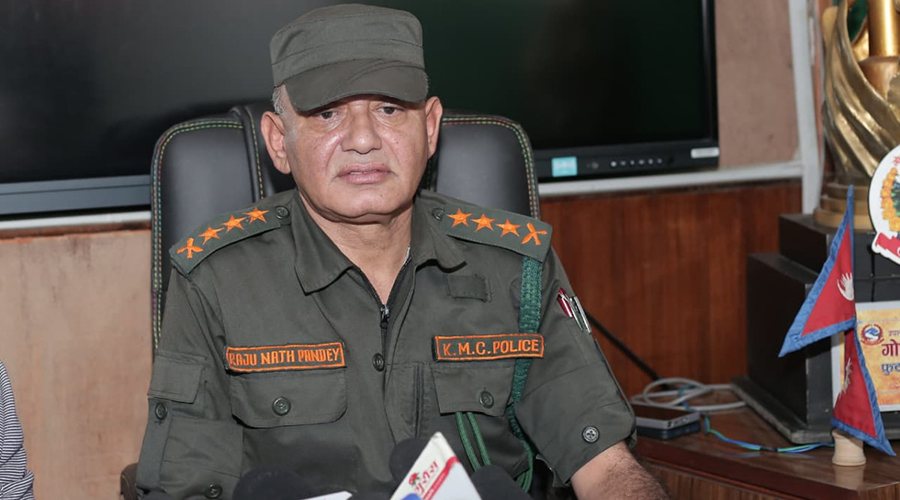
The Bagmati Clean-up Campaign recently celebrated the completion of its 200 weeks. Nepal’s Ambassador to China, Leela Mani Paudyal, who was one of the proponents of the campaign was in Kathmandu to mark the event. The former Chief Secretary spoke to Onlinekhabar, ahead of the commemoration event, on the challenges facing the clean-up drive. Excerpts:
You have come to Kathmandu to mark the 200 weeks of the Bagmati Clean-up Campaign. Did you miss Bagmati a lot while in Beijing?
I arrived in Kathmandu a week ago to take part in the Nepal Investment Summit. The clean-up campaign’s 200-week commemoration was just a coincidence. But, I have always loved Bagmati. How could I go away! When we started the campaign three years ago, we had put our hands in a bigger, more dangerous heap of garbage; but we worked hard and we’ve reached this stage.
How does it feel to see the campaign mark its 200th week?
I am now confident that everything is possible if we try. I also learnt that we can make things work on our own. We have been successful in sending a message to the people that we need not be slaves to foreign donations. I am happy that this voluntary campaign is moving ahead and it is challenging the common perception that people prioritise their petty interests before everything else, in whatever they do.
How has the Bagmati changed after the clean-up?
The river was ‘dead’ before we started the campaign. Now, it has ‘life’. We want to see the Bagmati water clean enough to bathe in it. We want to see the encroachment of its bed and banks stopped, its banks beautified and the community engaged in its continuous maintenance. We are at the halfway mark towards achieving that vision.
The target was to make the water clean enough to bathe by 2018/19. Do you think it is possible?
A campaign does not have any target. It continues throughout life. It is a campaign to change the people’s habits, conduct, culture and attitude. Therefore, we do not have any deadline nor any indicator to show that we have achieved our objectives. Once we achieve the goals we’ve set today, we have to move ahead for more. Once we clean this river, we have to do the same elsewhere. It is a matter of changing people’s lives. That is why we have not set the target for 2018 or ’19. However, we might change our activities (once we reach a certain stage).
But, as you are run a campaign to change the habits of the urban population, have activities that pollute the river stopped?
The situation is not like that. If it were close to reality, how could this dead river come alive today? If people were still disposing garbage in the river while we clean it, the situation would not have changed. But, it is not the case now. Littering has almost ended, but and the drive to clean the Bagmati continues. It means the change has been substantial.
The major reason Bagmati is polluted is because untreated sewage is discharged into it. How can this be solved?
For years, the government has been planning to construct sewage lines along the riverbanks. The government also introduced a plan to construct pipelines under other rivers in Kathmandu. This means that all rivers will soon have their own sewage systems.
Laying pipes on other rivers, except the Tukucha is not much challenging. The Tukucha does not have any bank as such. But, there is also a concern that rivulets such as the Dhobikhola may dry up when we take away the sewage from them. Therefore, we have recommended that small-scale processing centres be set-up to process sewage and pump them into the river system.
Could you tell us the major challenges the clean-up campaign faces?
The biggest challenge is to stop the encroachment of the banks of rivers. The second challenge is to come up with a new waste management system. The way we dump waste collected from rivers – handing it over to the Kathmandu Metropolitan City to take it to a dump – is not sustainable.
We need to segregate biodegradable waste from the non-biodegradable ones, and it needs to be done within the city. Non-degradable waste should be divided further: some of it should be processed. We are yet to adopt this waste collection and processing method. It also includes sewage management.
The third challenge is to engage local communities in clean-up drives and to make them feel they own the idea. We need to develop their capacity and constantly motivate them for it.
How successful was the campaign in make people take ownership of the clean-up initiatives?
Very much successful! I think we have achieved more than what he had thought we would. When we launched the campaign, they used to think that it was people’s right to throw waste in the rivers. But today, throwing waste in rivers and any other public place is considered shameful.
Old habits die hard; it takes years and generations to change them. But we have been successful in change this decades-old habit in just four years, that too with a small scale campaign. Though I cannot say that we’ve completely gotten rid of the habit, we have indeed made a big leap.
But, the other habit that’s dangerous for the river have is that of using plastic bags…
Yes, it has been a challenge to reduce the use of plastic. There are many other issues to consider: not burning plastics, reducing waste, turning degradable waste into compost, processing waste to earn money, conserving public heritage, among others. Making people take ownership is not enough; they should get benefits for cleaning up the environment.
All these efforts take time and hard work. The campaign should take such initiatives.
The campaign is community-driven. How well has it mobilised people so far?
We have been able to make a big change without making the government invest a penny in such a short period. This change is bigger than what we have achieved by spending billions in disseminating messages about hand-washing.
We have created an ideal community along the Gokarna-Guhyeshwori stretch. While we clean-up one a week, they do it every day. They plant trees along the banks and have assigned community members to conserve them. What can give a better feeling of ownership than it? They have constructed more than a dozen gardens without receiving any government fund.
What are problems in community mobilisation?
Though government agencies are working with us, I am not satisfied with the way they are mobilising communities. The communities are working hard, but the government agencies are not giving them proper recognition. The government should assign communities works which they can do on their own. Only big projects that communities cannot handle should be given to contractors. I wonder why the government agencies do not get this.
Expensive consultants are being hired with foreign loan to ‘beautify’ the rivers; this should have been given to dedicated communities. It is not right.
When will the campaign conclude?
It will continue forever. The campaign is just akin to personal cleanliness; it begins at birth and ends after death. It is not a ‘project’.
Also read:
http://english.onlinekhabar.com/2016/04/01/373713
http://english.onlinekhabar.com/2016/03/27/373506
http://english.onlinekhabar.com/2016/06/22/379878






















